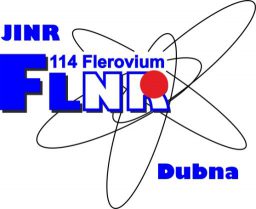About Flerov Laboratory of Nuclear Reactions
The Flerov Laboratory of Nuclear Reactions was established at the the Joint Institute for Nuclear Research in 1957.
The laboratory was named after its founder, an outstanding Soviet physicist Academician Georgy Flerov who served as FLNR director for over 30 years.
Academician Yu.Ts.Oganessian, a well-known scientist, has been part of FLNR since its beginnings in 1957, first under Georgy Flerov, then as director himself from 1989 to 1996, and today as scientific leader.
Dr.S.I.Sidorchuk has been holding the position of the Flerov Laboratory of Nuclear Reactions director since February 2020.
The Flerov Laboratory of Nuclear Reactions has delivered over a dozen scientific discoveries that helped reveal new insights into nuclear physics. Outstanding achievements of the FLNR staff—international scientists, engineers, analysts, etc.—in the synthesis of superheavy elements were recognized by naming element 105 “dubnium” after the town of Dubna. The decision was made during the General Assembly of the International Union of Pure and Applied Chemistry (IUPAC) held on 22–30 August 1997 in Geneva.
Recent years marked the greatest results in the synthesis of superheavy elements in 48Ca-induced reactions.
Experimental evidence for the existence of the island of stability of superheavy elements was gathered.
Six new superheavy elements with Z=113–118 and over 50 new isotopes of superheavy elements with Z=104–118 were synthesized.
On 30 May 2012 IUPAC officially approved the names “flerovium” (Fl) for the element with atomic number 114 and “livermorium” (Lv) for the one with atomic number 116. Chemical properties of superheavy elements and reaction mechanisms leading to their formation, properties of light exotic nuclei (such as 5H, 10He, etc.), reactions induced by the neutron-rich halo nucleus 6He spectroscopy of heavy unstable nuclei, exotic fission models, and other challenges in the area of low-energy nuclear physics are extensively studied in the laboratory.
On 30 November 2016 IUPAC announced that elements 113, 115, 117, and 118 were officially assigned the following names: nihonium (Nh), moscovium (Mc), tennessine (Ts), and oganesson (Og). So the official names and symbols for the four chemical elements are:
Nihonium and symbol Nh for element 113,
Moscovium and symbol Mc for element 115,
Tennessine and symbol Ts for element 117, and
Oganesson and symbol Og for element 118.
Today Flerov Laboratory of Nuclear Reactions is one of the world’s leading research centers in the field of nuclear physics. Of the 450 lab staffers, over 150 are research scientists (18 are doctors of science and 65 are candidates of science holding PhDs). To implement the laboratory’s programme and realize creative ideas, the infrastructure is expanding at a rapid rate. Four heavy-ion accelerators, one electron accelerator, and over ten major multifunctional experimental setups are currently operational or under development.
DRIBS-III is currently the main lab project. As part of the project, the world’s first complex named the Superheavy Element Factory (SHE Factory) was designed and constructed. The unique physics instrument aims to focus on various aspects of superheavy element research. The key elements of the Factory are a new high-current DC-280 cyclotron, the world leader among accelerators of this type and the basic SHE facility; several cutting-edge efficient setups, including novel gas-filled recoil separators for physical and chemical studies; the velocity filter SHELS; and others. The experimental hall of the Factory of Superheavy Elements was formally opened on 25 March 2019 with a ribbon-cutting ceremony. At the end of November 2020, the first experiment was started.
FLNR research in heavy-ion physics focuses on three major areas:
- Synthesis and properties of nuclei at the limits of stability
- Accelerator complex of ion beams of stable and radioactive nuclides (DRIBs-III)
- Radiation effects and physical bases of nanotechnology, radioanalytical and radioisotope investigations at the FLNR accelerators.
